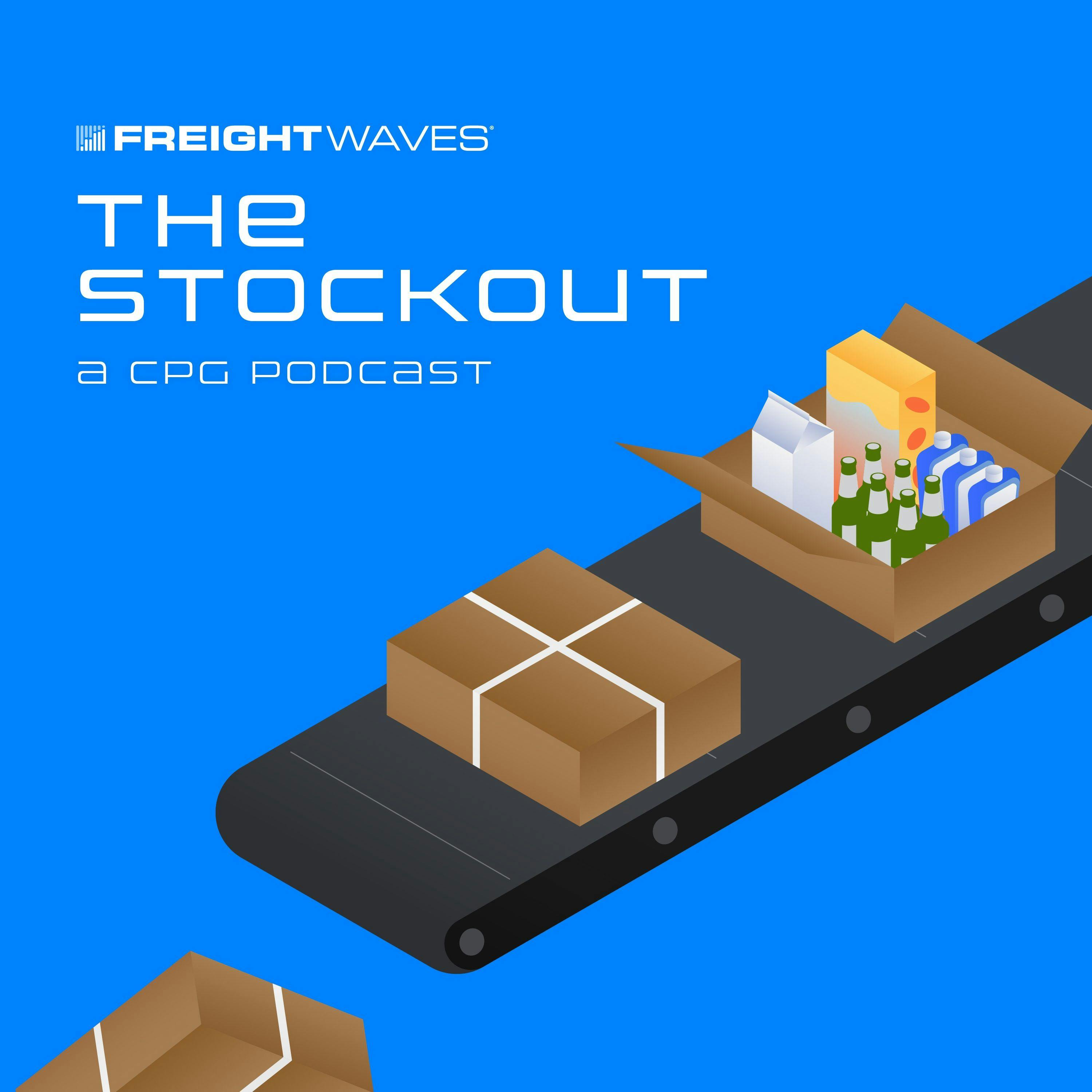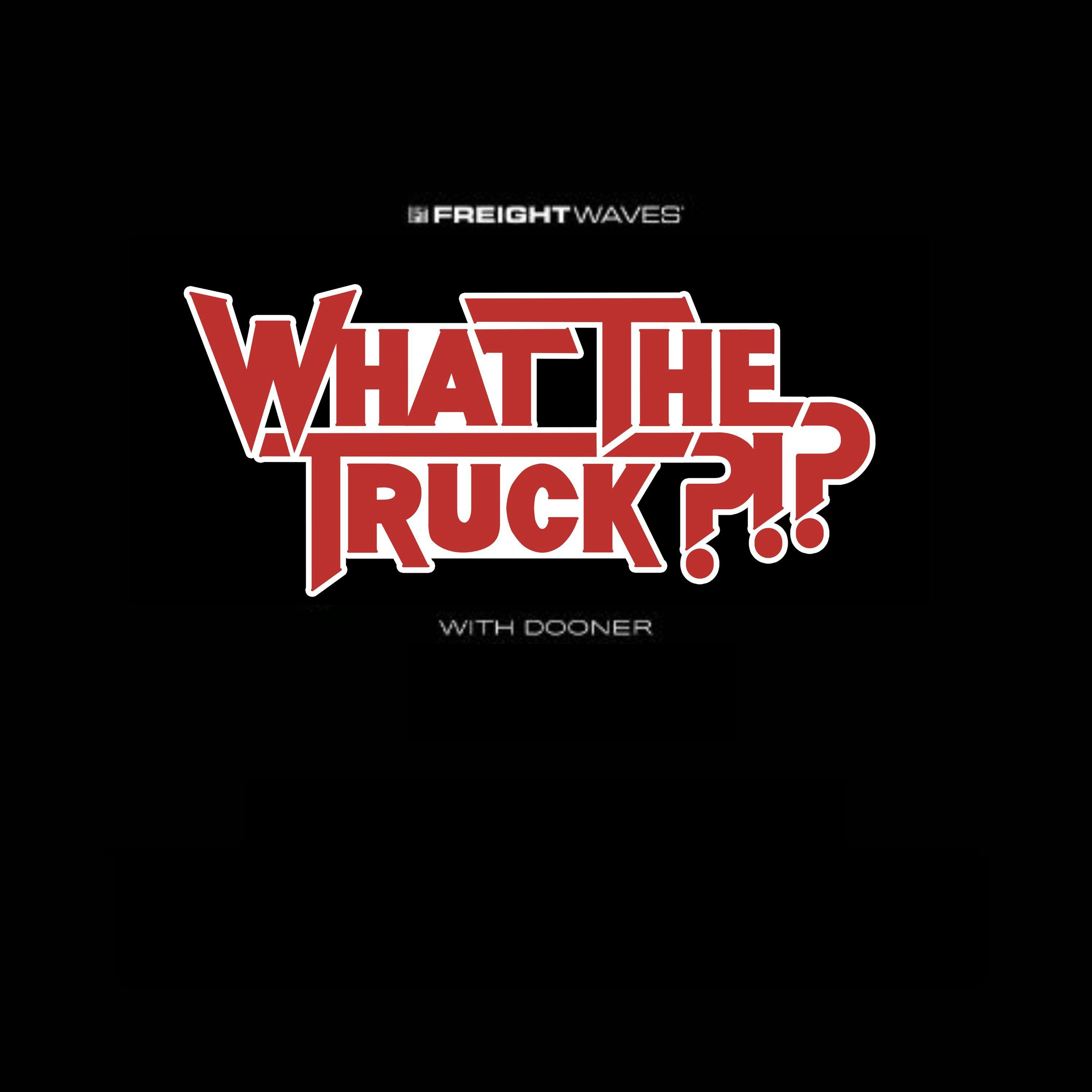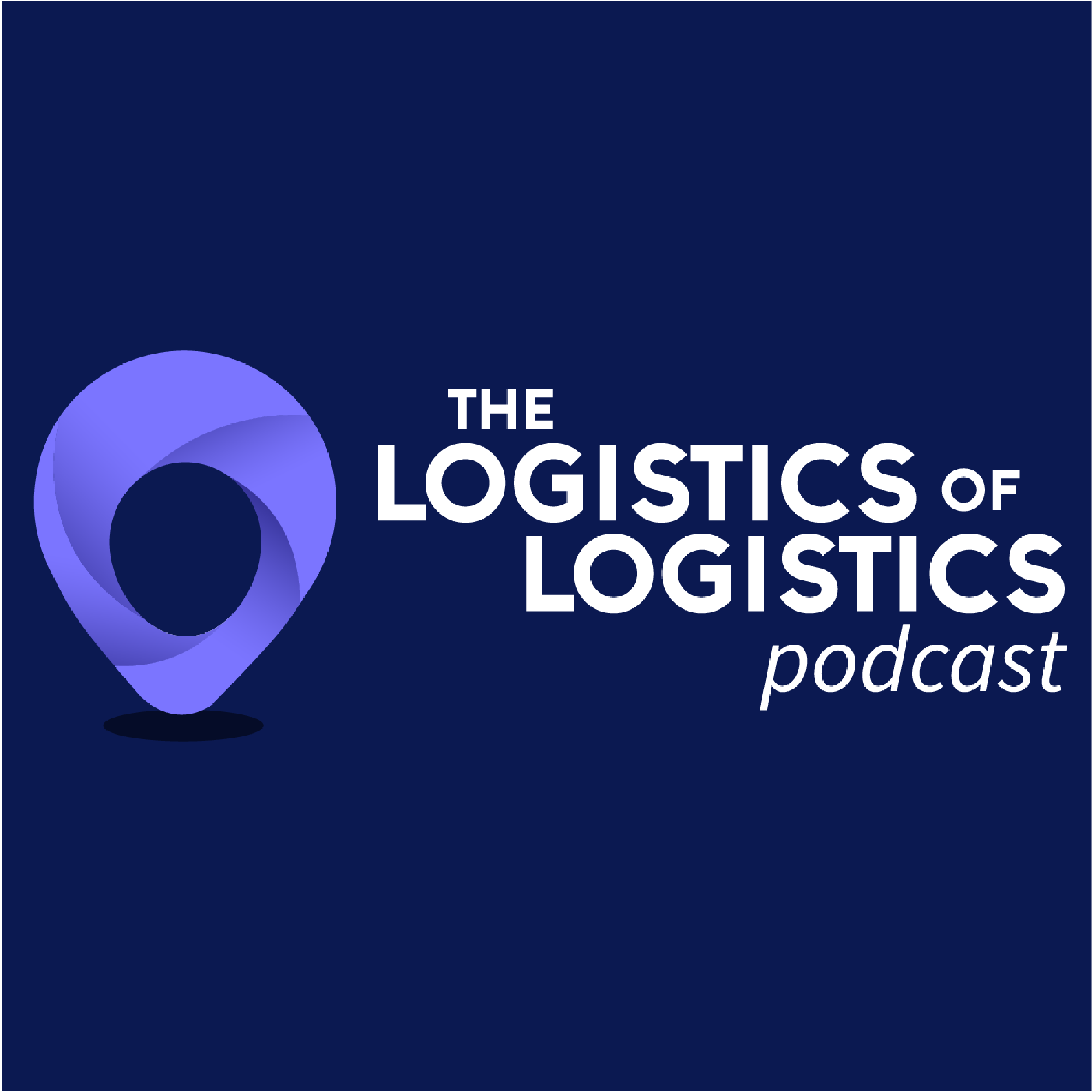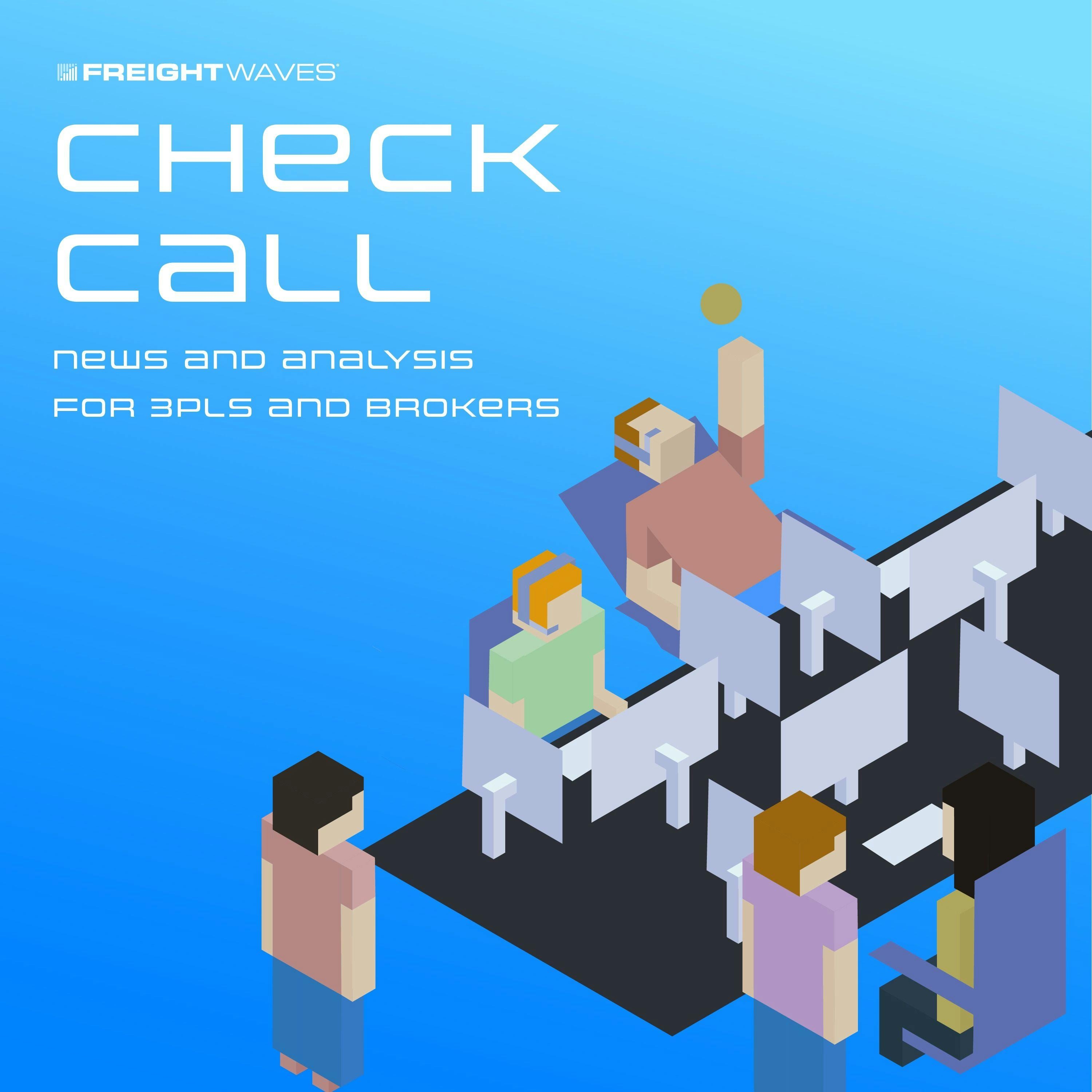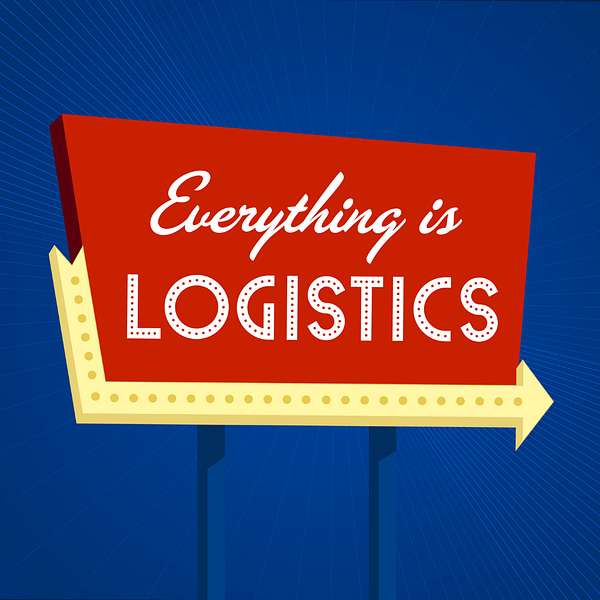
Everything is Logistics
A podcast for the thinkers in freight. Everything is Logistics is hosted by Blythe Brumleve and we're telling the stories behind how your favorite stuff (and people!) get from point A to B.
Industry topics include freight, logistics, transportation, maritime, warehousing, intermodal, and trucking along with the intersection of technology and marketing within the industry.
123k downloads and rated as a top 5% podcast out of all industries and growing. Follow along to stay curious and become a better thinker in freight.
Everything is Logistics
Mitigating Panic Buying and Overstocks In the Healthcare Supply Chain
Since the start of the pandemic, there has been massive volatility in the healthcare product supply chain, beginning with panic buying and overstock, followed by need-based purchases that have dropped off, and now spiking demand and out of stocks.
In this episode, Matt Bolden, Director of Product Marketing at Kinsa, breaks down the health analytics that help brands and retailers better optimize their supply chains. Kinsa is a data insights business that gives customers the ability to determine when and where illness-related products should be purchased to target marketing, reduce out-of-stock issues, and better plan for production.
LINKS FROM THE SHOW
- Kinsa Health
- Leading Retailer Engages Ready-to-Buy Allergy Sufferers with Kinsa Insights’ Allergy Media Targeting
TIMESTAMPS:
00:03:30 Supply chain volatility persists.
00:07:30 Get ahead of illness demand.
00:14:09 Forecast illness-based demand.
00:20:13 Monitor illness in real-time.
00:26:33 Proactive illness forecasting solutions.
00:29:01 Navigate digital world easily.
Feedback? Ideas for a future episode? Shoot us a text here to let us know.
-----------------------------------------
THANK YOU TO OUR SPONSORS!
Are you experienced in freight sales or already an independent freight agent? Listen to our Freight Agent Trenches interview series powered by SPI Logistics to hear from the company's agents on how they took the leap and found a home with SPI freight agent program.
CloneOps AI-powered phone operations for inbound and outbound calls with speed, scale, and efficiency. Our virtual agents handle high-volume interactions, automate workflows, and deliver real-time insights, freeing your team to focus on growth. Designed for logistics, retail, and beyond—seamless communication, smarter conversations, faster resolutions.
CargoRex – Your Logistics Hub. Explore, discover, and evolve with the all-in-one platform connecting you to the top logistics tools, services, and industry voices. Whether you're a leader, researcher, or creator, CargoRex helps you stay ahead. Explore Now
Digital Dispatch maximizes your #1 sales tool with a website that establishes trust and builds rock-solid relationships with your leads and customers. Check out our website services her...
Welcome into another episode of everything is logistics a podcast for the thinkers in freight. I'm your host, Blythe Brumleve. I'm happy to welcome in Matt Bolden, Director of Product Marketing over at Kinsa. And we're going to be talking about how health analytics can help brands and retailers optimize supply chains. So welcome Ian Matt to the show.
Matt Boldin:Thank you, Blythe. It's great to be here.
Blythe Brumleve:Awesome. So now this interview is coming at a perfect time because I just I'm not, I don't know, perfect time is the right way to phrase this. But I experienced my first stomach flu bug yesterday. And it's lingering effects today. So I am highly caffeinated right now and trying to get through this illness. And that's what we're gonna be talking about today is how people can you know, basically, or how brands and businesses can basically optimize their supply chains in order to combat different illnesses that are popping up all around the country. So for folks who might not know about what Kenza does, can you give us that sort of high level Eagle overview?
Matt Boldin:Yeah, absolutely. So kind of like you've just started to highlight illness, especially infectious illness is very unpredictable, it's highly volatile. So that's over time, and geography. So think, year to year season to season, even month to month or week to week, it's volatile, it's unpredictable, it's shifting as to where and when it's having the most impact. So that's true for you know, cough, cold stomach flu, you know, like you just experience is also true for illnesses like allergies. So this makes it really challenging for the brands and retailers who sell symptom relief products, forecast how much demand for their products, there's going to be how much product they're going to need to produce, and then where and when it's going to be needed the most. So that's where Kansa comes in. So a Kansa, we have the unique ability to predict where and when illness symptoms will spike purchase demand for highly volatile categories like cough, cold, flu, allergies, disinfectants and other illness related categories. So it Kansa basically, we do three things. We help retailers, consumer packaged goods, companies think medicine brands like use and X Johnson and Johnson brands like that. And pharma companies do three things, we help them target their marketing, where and when people need Ellen's products. And I think a little bit more relevant to our conversation today, we help them reduce out of stocks, where and when illness driven demand is going to surge. And we help them plan more effectively and reduce risk. So that's things like financial planning, production planning, and just overall risk management.
Blythe Brumleve:And so give us I guess, sort of a high level view of what the current healthcare supply chain looks like. Because it's all sounds, you know, very data driven. And from what I understand is, it's pretty much a data company that is providing these kind of collecting these kind of insights, and then providing them to retailers and brands. And so what does, I guess sort of the current healthcare supply chain look like? And then where does Kenza fit in? Yeah, that's
Matt Boldin:a great question. So I would amend that slightly Blythe and say that we're an insights company, we're a data insights company, you know, we do have this unique data source that we're combining with other data sources to produce our insights. But we do have a, we do have SAS platforms that we're producing, and that were, that we partner on our customers that we partner on with our customers to use. So as far as that as far as the healthcare product supply chain, which is what I can speak to you today, you know, think like illness products, so that symptom relief products, like you know, cough drops or Cold Flu medications, things like that. That's things like disinfectants, you know, wipes, those kinds of things. If we look at the past few years, basically ever since COVID, we've really, just to kind of go back to what I said at the beginning, we've just seen a ton of volatility, you know, kind of a push and pull on the supply chain. So if we go back to 2020, you know, think about February, March of 2020. You know, the pandemics first starting there's a lot of panic buying going on, there's a lot of stocking up on things like disinfectant wipes, medications, you know, any, any products really related to illness. So what we're seeing there is we're seeing out of stocks quickly across the country, you know, that wasn't just toilet paper that was especially illness related products actually, as well. And that when we saw after that is due to kind of societal response to COVID You know, remember, shutdowns, people not socializing as much work from home becoming pervasive school shutting down. What we saw was that illness levels as a whole, you know, think about flu, colds, those kinds of things are usually transmitted with all that intermingling. Absolutely dropped, just dropped we had a very flat overall illness season. For the rest of that year and into 2020 21, because people weren't socializing, more socializing as much, there wasn't as much opportunity for illness to, for illness to spread. So we saw then was the panic buying switched into, there's a total there's a lack of need based purchasing. So we go from an overstock or we go from an under stock dynamic, where we are seeing out of stocks, you know, the beginning the pandemic, to now we're seeing overstocks, we're seeing, you know, all these orders are popping up from from from brands and retailers to try to meet demand from customers early on pandemic, that need base demand, ebbs and eventually kind of disappears. So now we're seeing overstocks, then we get into illness season again, and to the illness season and November, December, January, February of 2020 20, and 2021. And then we see demand spiked back up. So now we're in the opposite environment with a supply chain crisis that we're seeing with just the supply chain supply chain across the board, not just illness products, but across the board. Now we're back to this environment of out of stocks. So it's just kind of an ebb and flow where we've seen out of stocks over stocks out of stocks again, and then ever since the 2021. Season, it's largely what we're largely seeing issues with, without of stocks with brands and retailers not being able to meet demand because of the supply chain, for lack of a better word, the supply chain craziness that we've seen since the onset of the pandemic.
Blythe Brumleve:And so it's a lot of this just very difficult to predict. But I would imagine that that's where Kinzer comes into play with a lot of your different offerings in insights, as you said, but then there's also this one really cool thing that I was watching on one of your interviews, or not you but but Kensit in particular. And it was the smart thermometers. Can you give us a breakdown of how the smart thermometers and how that concept works within Kansa?
Matt Boldin:Sure, so the smart thermometers are a part of that unique data source that I mentioned earlier, that are part of the mechanism for capturing this missing ingredient data source. And so let me open it up or kind of draw back a bit and say that, really, at the end of the day, what we're trying to do is we're trying to help, you know, with this backdrop we just talked about, we're trying to help our customers, wellness, product brands and the retailers that sell those brands to get out of a reactive mode and do a better job of forecasting, to get ahead of demand and build the right amount of rent and build the right amount of product. And then of course get to the right place where it's needed the most. So how do we do that? Well, basically, what we found was that available illness data sources to try to predict how much illness based demand there was going to be, we're totally insufficient. They were lag, they were in comprehensive. They were frankly, just not accurate. So what we set out to do, starting about 10 years ago, actually a Kansa was we sought out to collect that missing ingredient data and that missing ingredient data is real time, household level data collected at symptom onset. So today, what we're doing is we're aggregating data from more than 30 sources, healthcare data sources, lab data sources, but we're collect that missing ingredient data source from a proprietary network of millions of users to accurately detect and forecast spreading infectious illness. So to do this to capture this hyper hyperlocal illness data before or if someone have never visited a doctor in the first place, we invented a new category of products that smart thermometers do this talk about. So those smart thermometers, which we introduced about 10 years ago, along with our medical guidance app, which we refer to as a nurse in your pocket, it's basically it's it's literally giving you a medical guidance for you and your family as to how to deal with symptoms, what treatment options you should pursue, you know when to call a doctor, that kind of thing, as well as email and text alerts. This is that missing ingredient data set that has allowed us to communicate with households as symptom onset, and to be able to accurately predict illness spread before it happens.
Blythe Brumleve:This episode is brought to you by SPI logistics the premier freight agent and logistics network in North America. Are you currently building your freight brokerage is Bucha business and feel that your capabilities are being limited due to lack of support and access to adequate technology? At SPI logistics, we have the technology, the systems and the back office support to help you succeed. If you're looking to take control of your financial future and build your own business with the backing of one of the most successful logistics firms in North America, visit SPI three pl.com to learn more. It's a what does the I guess the data collection process look like? Because for a lot of folks, you know, for me in particular as soon as I got sick yesterday it was one of those things where it just came on so quickly. Then later a few hours later I started getting a fever. I have a regular thermometer at the house but you know it If I would have even thought about the fact that I could get a smart thermometer to be able to properly diagnose, I didn't even find out exactly what I had until this morning. So what does that the data collection process look like? Is it more of a, I guess, getting the thermometers in as many hands as possible and spreading brand awareness Is it as simple as that.
Matt Boldin:So we've built our smart thermometer business over the years to the point where we do have this network of 2.5 million households. And so a lot of that just been through through retail sales, you know, we've come to make up about 90% of the smart thermometer market. Over the years, we've also distributed thermometers through title nines, through through Title One schools, we've built up distribution networks to try to get our thermometers in as many hands as possible, in order to make sure that we're getting you know, a great representative sample of the United States of our population to see you know, where it went illness spreading. And so kind of what you just talked about with your recent illness as a lot of the conceit of how we're able to capture this illness data that other folks just aren't able to, you know, as soon as you fall sick, what's one of the first things you do, I think, as you said, you're going to reach for a thermometer and take your temperature, right. So that's what we realized is that's the opportunity to get the very first sign of symptoms is if we can capture if we can, you know, enter a somebody's illness journey, if we can be a part of somebody's illness journey. As soon as they're getting sick. That's how we're going to get the first sign of illness and then see where it's going to be able to predict where it's going to spread next. So after the smart thermometer that then that's where we started with the medical guidance app. Now, the medical guidance app is where we're collecting, you know, so much more than fever data. But this is where we're interacting, we're able to communicate with households, and we're able to give them advice on a number of symptoms. So it's way beyond fever. It's, you know, it's cough symptoms, it's erratic, it's headache, it's even things like stomach ache, or diarrhea, you know, GI symptoms, runny nose, stuffy nose. So we've been able to build up such an engaged and engaged user base with this app, we're actually getting 92% response rates on our symptom follow up questions that we're able to forecast, we're able to forecast illness symptoms, way beyond the scope of fever to cough, cold, flu allergies, etc.
Blythe Brumleve:And so with the with what makes that thermometer smart, is it just is it I don't want to say only taking your temperature? Is it measuring anything else like it? I didn't even know that there was such a thing as a smart thermometer, can you kind of give us a I guess a late layman's terms of what is meant what it is measuring, and
Matt Boldin:how sure is the thing that makes it a smart thermometer is the fact that as a connected thermometer, the fact that it's connected to this application, where you're able to get this real time medical adviser, real time medical guidance, you're able to log your symptoms you're able to see, for example, you know, if you're a parent, you're able to track the symptoms of your child and you're able to see, okay, I have a fever increase here, I have a symptom onset here, you know, starting to develop a headache here. And so using this log, you'll be able to get better care, you know, for your child taking that data to your provider, you know, to your primary care physician, for example. So this is what's really elevates our smart thermometer over, you know, a traditional thermometer.
Blythe Brumleve:And so what happens after so the if I have the thermometer I get diagnosed, I have the you know, the symptoms, I kind of know a general idea of what I have and how to treat it. What happens after the fact of, you know, the data collection are the data reporting, what happens on on Kansas side of things once, you know, certain, I guess, readings have been added to the system.
Matt Boldin:Sure. So transitioning from sort of the consumer side of Kansa, where we're interacting with folks with sick individuals, helping them to feel better, and transitioning into Kansa insights, which is our, you know, health analytics side of the business. What we're doing once we have this data, first of all, it's all aggregated and anonymized. 100%, aggregated anonymized, there's no personal data whatsoever that is used in any of any of our models. But what we're doing is we're able to apply ML to this data to then be able to forecast where and when we're seeing surges and specific symptoms, or specific category illnesses. So if we're, for example, we have, you know, X number of users and Atlanta, Georgia, and we're seeing a surge there. We're going to take note of that. And that's something that's going to show up in our SaaS products that is going to alert a brand or retailer that hey, we're seeing a surge in for example, cough. This is where you might be expecting more demand for your cough products. This is where you might want to allocate more products. This is where you might want to do more marketing. This is where you might want to you know, this is where you might want to Target promotions. So there's a lot of different business outcomes or business levers that can be pulled based on this illness. Because at the end of the day, it's really illness that drives demand for illness related products. It's a need based product.
Blythe Brumleve:And so when with respect to the brands and the retailers that you're working with, I know that you just had a press release about Zyrtec and your your partnership with them, what kind of use cases can you can or examples that you can give us from, you know, a brand using the insights from Kansa? And how they're able to apply that to their own supply chain?
Matt Boldin:Yeah, absolutely. So we've got a few different solutions. And I'm glad you mentioned Zyrtec are so excited to partner with Desert Tech. And Zurich tech in particular is going to be using our forecast advisor solution. So this is about getting ahead of illness and forecasting illness and therefore illness based need ahead of ahead of me the head of the season. So if you think about cold cough and flu that's ahead of the cold cough and flu season, you know, so think like November, what's going to be happening in January. But with allergy, you know, you really have to allergy seasons is sort of like this double hump model over the course of the year, you've got a spring allergy season, which is a little bit more intense, and you've got a fall allergy season that's slightly less intense, but tell that to somebody who's suffering from foul allergies. So what they're going to be doing is they're using our forecast advisor product to predict the level of allergy medicine needed to fulfill demand. So that's going to help their planning teams to better prepare for and respond to this upcoming spring allergy season. And then the father's season after that. So basically, what we're doing is we're helping them to predict and get ahead of the right level of need based demand based on prevalence of allergy symptoms.
Blythe Brumleve:And then based on the insights and the forecasting that you're able to give them, especially when it comes to the insights and maybe you know, stock wise and if things are going to be running out soon. What kind of response time does it look like for these brands to be able to just flip the switch and be able to position their marketing and position their products into areas that it needs? I mean, it's might probably be a question more for like each brand specifically, or they probably each have their own response time. But is it is it I would imagine it's much more quicker for them to be able to make these kinds of decisions and efficient decisions is probably where cancer comes into play. Is that a safe assumption?
Matt Boldin:Actually, it's kind of across the it's really the full gamut of timeline, it really depends on the use case at the end of the day. So if we think about from the longest lead use cases, especially with like this forecast advisor solution, and we were just talking about, we're looking at long lead forecasting, so we're looking at things like influencing overall production, you how much medication, are you going to produce something with like an eight to 12 week lead time? And given how long? how long they'll lead our forecast? Is that something that we're able to help them? Do? You know, are we going to influence production up or down? Another thing is financial planning, you know, what our overall financial goals for the quarter for the month? What are what what's a reasonable sales goal that's going to be based on illness based need, right? So we're going to give them the we're going to help them to develop the best and most accurate forecast for what their financial projections should be. If we start moving a little bit into the season, we're getting a little bit tighter and timeframe, then that's where we start looking into more like a dynamic response. And in terms of supply chain, so that's where we pivot to more of our retail selling product, which is a product that helps brands know where and when illness is going to surge, and where and when their illness, correlated products, again, by symptom are going to be most in demand. So what it does, that allows brands to say, okay, with a four to six week lead time, you know, that's what, that's the timeframe, we're operating it with our retail selling product, distribution center, why and this area of the country, say the southwest portion of the country, we're gonna be, we're gonna see a really large surge in cough symptoms or or nasal symptoms, for example. So if you're in a brand, that's you know, if you're at a brand that's selling cough medicine, that's that's positioning nasal medication, you'll be able to say to your retailers, okay, we're seeing that in four to six weeks, we're going to be getting this surge in demand, you guys really need to move some more product into this distribution center in the southwest, you know, we're gonna have more demand in the southwest, less demand in the Pacific Northwest, you're able to dynamically respond, you're able to pull that lever to move product from one area to the other. And it's the same dynamic with retailers with our inventory optimization solution, we're getting even tighter and timeframe, whether the seven to 14 day lead time, where they're able to do was they're able to dynamically adjust safety stock EVE Online at store level. So they're able to say, okay, we can we can move a little bit more stock from this area from this store, to this store on the other side of town or on the other side of the state so that we can meet demand where there's going to be more demand for our products. So it's really from all the way you know a month in advance to do as dynamic response as a one to two week lead time.
Blythe Brumleve:And that's it one to two weeks or even four to six weeks could could mean the success or the failure of a lot of people getting sick or not getting sick. And it's kind of comparative to like the CDC, for example, where they're reporting on data that is maybe four to six weeks old, where you're predicting where in advance of where some of these trends are going. And I was watching one of the interviews with a CEO about a year ago, that said the CDC wouldn't collaborate with the private sector in order to communicate pockets of infection. That was a year ago, as the CDC sort of changed their tune on some of these predictive analytics and working with the private sector are they still kind of, you know, as government entities do kind of stuck in their old ways.
Matt Boldin:Unfortunately, I would say what we're seeing is more of a ladder. We're, we're seeing private organizations, we're we're working with private organizations ourselves, without the influence of public organizations, I guess, is the best way to put it without the influence of the public sector. But to your point, though, that is where this unique data stream that we have access to our proprietary data we're getting at the house from these households, you know, as symptom onset, that's real time. And that's the exact that's the real time signal. That's the real time data that we're piping to our customers, as opposed to, like you said, you know, it's unfortunate, but the data that the CDC is relying on, you know, it's already weeks old, and it's in comprehensive, because it's only coming from folks who have entered the health care system. So fewer than 50% of folks who get the flu, ever see a doctor ever see a primary care physician ever even, you know, log on to TelaDoc, and see a provider that way. So that we start thinking about colds, RSV, other less severe illnesses, that number drops. So you're seeing an even smaller percentage of the folks are actually suffering from illness. And so that's where Cannes is unique is that we get a full picture of illness in real time as symptoms are happening.
Blythe Brumleve:And one one of the unique programs that I think you had, you had mentioned earlier, and I also heard in that same interview is that you partner with a lot of different schools, to give them these free smart thermometers. And I know for a fact that, you know, where I got my sickness from, was my best friend who has a kid in school, and she's a teacher. And so I know it was probably from kids. And so I would imagine that the school system is is really where a lot of this data can come into play and educate the entire community. Is that a safe assumption that, you know, maybe a lot of these illnesses are first being reported within the schools because of all the kids and germs and things that are inside of a school, and then it kind of permeates throughout the community?
Matt Boldin:That is generally true. A lot of illnesses that are there vector, they're starting in schools are starting with children, let's put it that way. They're starting with the pediatric population, they come home, they bring it to the family, etc. That dynamic does change though as diseases change. That's another thing that's kind of changed over time, with the advent with with the pandemic with the start of the pandemic is that we've seen this this, this dynamic of child to adult and adult the child has kind of flipped back and forth a little bit depending on what the dominant strain is, whether it's fluid that's more influencing illness, or whether it's COVID is more influencing illness. And then societal factors as well, social, social factors, like, you know, our school is in session, or are they close? Are folks working from home? Are things shut down? Or are we open. And so that's something that's changed a little bit over time. But as we move back to a more little bit of a more normal, a little bit of more normalcy in terms of our response to illness, I would say it's safe to say that we do see a large amount of transmission starting with children, whether that's in the school, or whether that's at home. And again, our smart thermometer product, as well as our medical guidance app is really helping us to get ahead of of illness with pediatrics, especially although we do of course, have many users that are adults as well.
Blythe Brumleve:Do you wish there was a central place to pull in all of your social media posts, recruit employees, and give potential customers a glimpse into how you operate your business? Well, all of this should already be on your website. But too often, we hand that responsibility of building our online home off to a cousin, a neighbor's kid down the street, or a stranger across the world. Digital dispatch believes in building a better website at a fraction of the costs that those big time marketing agencies would charge. Because we've spent years on those digital front lines. Our experienced team focuses on the modern web technologies to bring in all of the places you're already active online. Show off those customer success stories and measure the ROI of it all in one place. With manage website plans start Get $90 a month, head on over to digital dispatch.io to see how we can build your digital ecosystem on a strong foundation. We've got explainer videos right on the website and the ability to book a demo immediately find it all over at Digital dispatch.io. And so this feels like such a smart solution at Smart common sense solution to to be able to effectively provide the medication where it's needed most. I'm curious as to sort of the competitive landscape it is cancer really the only company that's providing these solutions? Or are you the market leader in that regard?
Matt Boldin:I would say we're certainly the market leader. There, there are some other solutions out there that are relying on traditional health care based data set claims based datasets to provide illness forecasting, but there's nobody else that has this real time illness dataset that's taken from households at symptom onset. To what I like to say is that we're doing a little bit category creation here, you know, we kind of created the smart thermometer category. And now what we're doing is we're creating a little we're kind of elbowing into creating our own health analytics category as well.
Blythe Brumleve:And so last couple questions for you. If I could, if I could give you a magic one to fix the healthcare supply chain, especially when it comes with respect to medication. What would you want to fix or what maybe is in the pipeline that Kansas is developing for the future?
Matt Boldin:I think the main thing would be to, I think the main thing would be to be able to, like I said in the beginning, get out of reactive mode and get proactive. So that's make being able to make these decisions as far as production and allocation ahead of demand. And so how are they doing that? They're accurately forecasting illness based need before it happens, and then integrating this data into into their supply chain into their production into their demand planning. So what I would say is that the data is there. The insights are there now Kansas producing that I think it's just a matter of actionability, and kind of expanding the use case of those insights that we're providing?
Blythe Brumleve:Awesome. Yeah, this was a great conversation. So where IT folks want to get a smart thermometer if folks want to see more, or learn more about the insights and the forecasting that Kinsa provides? Where can they get more information and even purchase a smart thermometer.
Matt Boldin:So if you want to learn more about Kansa insights, I would steer you to Kansa insights.com. We've got a lot of great content on there, including case studies and profiles with some of our work with organizations like customers like new Synnex customers like Zyrtec, we just talked about Johnson and Johnson consumer health. And if folks want to become a user of Kansa, if you want to pick up a smart thermometer, we're at major retailers across the country, and Amazon. So I would say your local drugstore will carry a Kansas smart thermometer, or you can always pick one up online.
Blythe Brumleve:Awesome. Well, thank you so much, man, that this was a great, fascinating conversation. And it's cool to know that these kinds of solutions exist. And even though I'm sort of past, you know, where I would use it for my sickness, I can at least know that in the future that I can have something to rely on. So appreciate your time. And thank you again.
Matt Boldin:Absolutely. Thank you. Bye.
Blythe Brumleve:I hope you enjoyed this episode of everything is logistics, a podcast for the thinkers in freight, telling the stories behind how your favorite stuff and people get from point A to B. If you liked this episode, do me a favor and sign up for our newsletter. I know what you're probably thinking, oh God, another newsletter, but it's the easiest way to stay updated when new episodes are released. Plus, we drop a lot of gems in that email to help the one person marketing team and folks like yourself who are probably wearing a lot of hats at work in order to help you navigate this digital world a little bit easier. You could find that email signup link along with our socials and past episodes. Over at everything is logistics.com And until next time, I'm Blythe and go Jags



